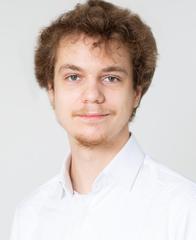URL: https://www.desy.de/news/news_search/index_eng.html
Breadcrumb Navigation
DESY News: New Emmy Noether Research Group for DESY theorist Johannes Braathen
News
News from the DESY research centre
New Emmy Noether Research Group for DESY theorist Johannes Braathen
Take what we know about the Higgs particle from experiments so far – its mass, the way it is created or interacts with other particles or even with other Higgs bosons. Then compare this with very precise theoretical predictions for these same properties. That way we can get information about things that are beyond what we know or can access directly today, in particular phenomena that go beyond the Standard Model of Particle Physics, currently the best theory describing properties and interactions of known particles in the Universe.

Johannes Braathen, new Emmy Noether group leader. Image: DESY
The project, which started in November, is called “Cornering New Physics with Generic Precision Calculations.“ Braathen, who joined DESY three years ago as a postdoc and has recently become junior staff, is joined by PhD student Alain Verduras and another two PhD students and two postdocs over the course of the project to help him investigate phenomena that go beyond the Standard Model. Their particular attention will be on the Higgs boson, the latest addition among known subatomic particles – predicted fifty years previously, it was discovered at the Large Hadron Collider at CERN in Geneva in 2012.
There are many open questions in particle physics and thus in our understanding of how the Universe works. One of these questions is why there is an asymmetry between matter and antimatter. Why do we exist at all and are made of matter? Both matter and antimatter should have been created in equal measures at the big bang, which should have led to a complete annihilation of all kind of matter. We exist, so there must be something however tiny that lets matter dominate. “Whatever happened after the big bang that led to this state could have happened at the same time as when the process of the Higgs boson first giving mass to other particles,” Braathen explains. “The Higgs is at the interface of many aspects of particle physics and early-Universe evolution. We want to prepare theoretical predictions to be ready to interpret new data when they come in from Higgs factories and cosmological observations.”
The Emmy Noether group will prepare for data from the experiments at the Large Hadron Collider LHC at CERN. However, it will also include cosmological observations, data from gravitational-wave observatories like the space-based LISA and data from other experiments. The goal is to make extremely precise theoretical predictions for phenomena that can then be investigated by experiments. Braathen stresses that their calculations are not model-specific but generic. The theorists want to broaden the applicability and increase the accuracy of automated calculations by calculating a prediction for a given phenomenon or physical quantity of interest for a general theory. The result can then be applied to any specific theory that goes beyond the Standard Model. “Our hope is to create tools that can be used by everybody in the community,” he stresses.



